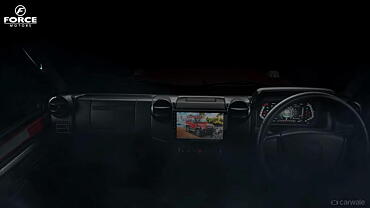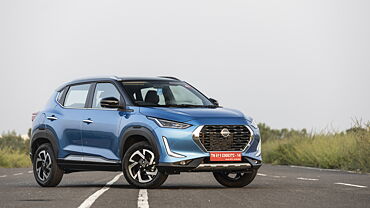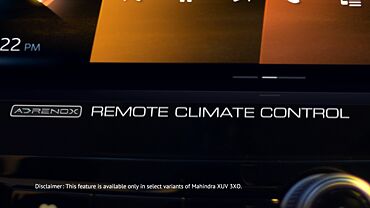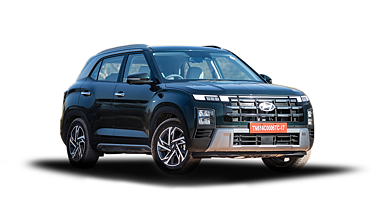One of the most important considerations while buying or owning a car is the fuel efficiency or the mileage of that car. Indeed, beyond the initial purchase price of the car, you are going to end up paying as much on the mileage of it. So indeed, the Fuel efficiency is possibly the most important thing to determine the worthiness of a car.
In today’s article, Shiva Shankar, auto engineer, takes a look at the car’s mileage or fuel consumption. What determines how much fuel the car consumes? And how can we improve it.
As always, we ask that you share your feedback or experiences with us; it will definitely be most helpful to all readers of this article.
Definition of car mileage
The Fuel Efficiency of a vehicle is defined as the amount of fuel consumed per unit of distance traveled. This can further be specified as consumption of fuel with no load, full load, laboratory conditions, actual conditions, etc.
The mileage is usually calculated by filling a car’s tank with a known quantity of fuel and measuring the distance at which total amount of fuel is consumed.
In effect, a car converts chemical energy into mechanical energy which is output at the wheel.
To know about the fuel efficiency of any car, we need to understand which are the main parts of the car involved in this conversion.
The car’s engineering and fuel consumption
In broad lines, a car’s power is developed in the engine, where it is passed on to the crank shaft. The fly wheel is connected to the crank shaft, which then connects to the clutch, gear box, propeller shaft (in rear wheel driven cars), the differential, the drive or axle shaft and then finally the wheels.
Let us consider the importance of each stage with respect to fuel efficiency
Engine of the car
The car’s engine is responsible for the combustion process and it is here that chemical energy (i.e. fuel) gets transferred into mechanical energy (i.e. rotation). Technically, then, efficiency of fuel comes into picture right from combustion process. It is necessary to also take into account different combustion processes in petrol and diesel cars.
In four stroke engines of both petrol and diesel, one complete cycle consist of four strokes,viz. Suction, Compression, Power and Exhaust.
In the petrol engine, fuel air mixture will be sucked during suction stroke and spark will occur at the end of the compression stroke which leads to power stroke, which gives the actual power. Note that one stroke means the movement of piston from top dead center to bottom dead center and vice versa).
Later during the exhaust stroke, the movement of piston from bottom to top ensures that exhaust gasses are sent out through the exhaust valve..
Specific Working of Petrol Engine
In a petrol engine, the fuel supply system consists of a pump which pumps the fuel from tank to fuel injectors. Meanwhile, air will be drawn through filter. The mixture is injected into the combustion chamber during suction stroke and other strokes follows.
The working of a diesel engine is similar to petrol engine, but the main difference is that in diesel engines only air is sucked during suction stroke and compressed during compression stroke. A fine spray of fuel is injected into combustion chamber at end of compression stroke. The combustion takes place as fine spray of diesel is injected to hot compressed air and this leads to power stroke. During the exhaust stroke all burnt gasses are sent out through exhaust port.
The ultimate aim of the combustion process is to convert the chemical energy of fuel into energy. The burning of fuel in combustion chamber is directly proportional to energy output and hence efficency. This is the foremost point considered by any designer while designing an engine.
Utilization of Energy developed in the engine
About 20 percent of the fuel energy is available as useful energy at the end of crank shaft. Hence, 80 per cent of your fuel’s useful energy is already lost at step 1 of the process. Let’s take a look at where this energy goes.
About 35 percent of energy goes as wastage through exhaust – i.e. non-complete combustion
About 35 percent of energy is transmitted to cylinder walls and hence to cooling system
About 10 percent will be lost due to frictional and other mechanical losses
For getting maximum energy out of fuel, and thus maximizing mileage, some of the points to be taken care of while designing an engine are as follow
- Reduction in exhaust losses, which can be done by finding out other way of making best utilization of heat. Example is exhaust gas recirculation which is used in most of the modern cars
- Reduction of losses to Cylinders can be effected by the use of suitable alloys while manufacturing engines. It’s a complicated issue as there should not be compromise in strength of the engine block and cylinder head. Also, it should be noted that cooling system has an important role in maintaining proper temperature of the cylinder block. For good combustion of fuel, it is necessary to maintain certain amount of heat in cylinder block and if it gets overheated it also leads to related problems.
- Reduction of Frictional Losses, can be taken care of by using best of the lubrication system, high quality bearings, and any other method leading to reduction of frictional loses.
- Ensuring complete combustion of fuel. This is one of the most important considerations while designing any engine, and it is where most of the manufacturers stress in research on finding methods of ensuring complete or almost complete combustion of fuel.
Let us now move on to another key component, i.e. the clutch.
Clutch
The function of the clutch is to engage and disengage the gear box from engine. In normal condition, clutch will be in engaged state so as to enable complete transmission of power. When changing gears it is necessary to disconnect the gearbox from drive, which is done by pressing the clutch pedal and hence disengaging the clutch from flywheel. After changing the gear, once we leave the pedal the clutch will be engaged again and hence transmission is enabled.
As mentioned earlier, anything related to mechanical frictional losses matters in overall efficiency. Here, apart from regular frictional losses in full engaged condition, when the clutch pedal is consistently ridden – i.e. using the ‘half’ clutch, leads not only to excessive frictional losses and hence power, but also to leads to faster wear out of clutch plate.
Automatic transmissions are a great improvement in this regard. But manual riders should ensure not to ride on half clutch.
Transmission or gearbox
The function of the gearbox is to transmit power from the flywheel to the propeller shaft in rear wheel drive cars and to the differential in front wheel driven cars.
The smoother the transmission, the lesser the frictional losses and hence we get a better efficiency.
Maximum fuel efficiency can be got while driving in top gear or direct drive. As we move on to lower gear there will however be higher torque available at output. Fuel efficiency will be affected somewhat. The main reason for this is that a lower gear uses more teeth, which means more friction and hence more losses. A higher gear the friction loss is less and hence the mileage is better.
For getting a better mileage, using the best gear or transmission oil helps a lot as it reduces friction losses further and gives smoother performance. Also, driving the car in top gear to maximum extent contributes for best of efficiency since the engines efficiency increases in top gear.
Automatic versus Manual
The automatic transmission is of great utility in achieving a smoother drive. The absence of clutch plate reduces some frictional losses, but the overall effect is neutral or negative due to some of the power being utilized in running the torque converter.
However, the automatic transmission does ensure that shifting gears is done properly and timely.
Hence, though an experienced driver will be able to get a better mileage using a manual transmission, a novice might benefit from an automatic transmission.
Differential
The necessity of differential is to enable the vehicle to take turns .The function of the differential is to distribute equal torque to two wheels while running in straight line and provide required ratio when taking turns and on uneven surfaces.
Of course, the driver won’t have any control on operating the differential. However, mechanical losses can be minimized by using the best of the gear oil or differential oil (as it is used separately for the differential in rear wheel driven cars).
Transfer Box
The function of transfer box is to engage the vehicle to four wheel drive or two wheel drive as desired, and hence it is used only in 4WD cars. It is similar to the gearbox in construction with suitable design for the purpose.
When the car is driven in 4 wheel drive the transmission utilizes some of the power and hence fuel efficiency would also be affected, viz. reduced.
Wheels
Road wheels are the last part of the transmission, taking drive from differential. Tires fitted to wheels finally ensure movement of the car.
The main function of the tyre arrangement is not only to ensure smoother running of car but also to have good road grip in all conditions. Tyre inflation pressure matters a lot in functioning of tyres. Over-inflation leads to wear-out at the center and under-inflation leads to wear out at sides. A perfect tire pressure as recommended by manufacturers help a lot in getting not only best performance, but also ensure good fuel efficiency. The reason is that the inflation of the tyre affects the friction the car encounters.
The above has been a review of the car’s engineering. There are other factors which matter also.
Air conditioning
The working of the air conditioning requires an air compressor to be run at required speed. The drive to air compressor is given from a Pulley which is run with power from crankshaft and hence this reduces the available drive at a given speed, which means that the total mileage will reduce by 1 or 2 KMPL.
Car Weight and Load
Another important factor that affects fuel efficiency includes Vehicle Weight, which acts directly on the chassis and hence the relative power required to move the car is higher, which in turn influences mileage.
So why do cars differ in mileage?
Different cars differ in mileage. Given what we have discussed above, we can now summarize some reasons for that difference.
- Difference in weight of the car
- Difference in efficiency of engine construction (across the entire path)
- Difference in engine capacity – a larger engine will automatically consume more fuel and also lose more energy!
- A/C or non A/C
- Automatic vs Manual
- Tyre pressure
- The type of lubricants used
Driving Style
Finally, even in two equivalent cars we will see differences in mileage between drives but also versus the manufacturer quoted mileage
Though manufacturers claim the best of the mileage, in actual usage by customers the car tends to give less mileage. When testing the cars for efficiency on-road, manufacturers assign it to the best drivers and the road conditions are be very good. In this case, the main intention of the driver would be to get the best mileage and hence he will follow all standard guidelines like driving in economy speed, direct gear, minimum passengers and luggage.
In general usage, the following recommendations would help to get a better mileage:
- Drive in top gear as much as possible
- Switch off the engine during long time waiting in signals – the engine is burning fuel for no reason
- Using best quality air filters and fuels to ensure optimal combustion
- Get proper servicing regularly to ensure best lubricants and minimize friction loss
- Maintain correct tire pressure
- Don’t carry dead weight in your car
- Minimize usage of AC
- Drive calmly and composedly, so that you slow down gradually and accelerate gradually, and also make calm corners. All this minimizes engine usage.
Conclusion
The fuel efficiency is a very important factor while selecting any car or bike. There are factors which depend on the vehicle itself, and some factors which depend on the way you use the vehicle.
In any circumstance, it can only benefit you to be conscious of your fuel consumption and ensure it is minimized.
A final note, for those who want to go all the way and get better mileage. There exists so-called tuning or modification centres which promise high increase of your mileage. What they do is provide a leaner mixture injected into the engine, ie less of fuel and more of air. As a result, mileage will improve, but power and acceleration reduces.
And that finally, is the main trade-off one needs to make to get best mileage!
Shiva Shankar is an auto engineer and teaches engineering in Bangalore. This has been an attempt to explain mileage from a technical stand point. We hope you found it useful. Please do share your mileage knowledge and experience below.



























